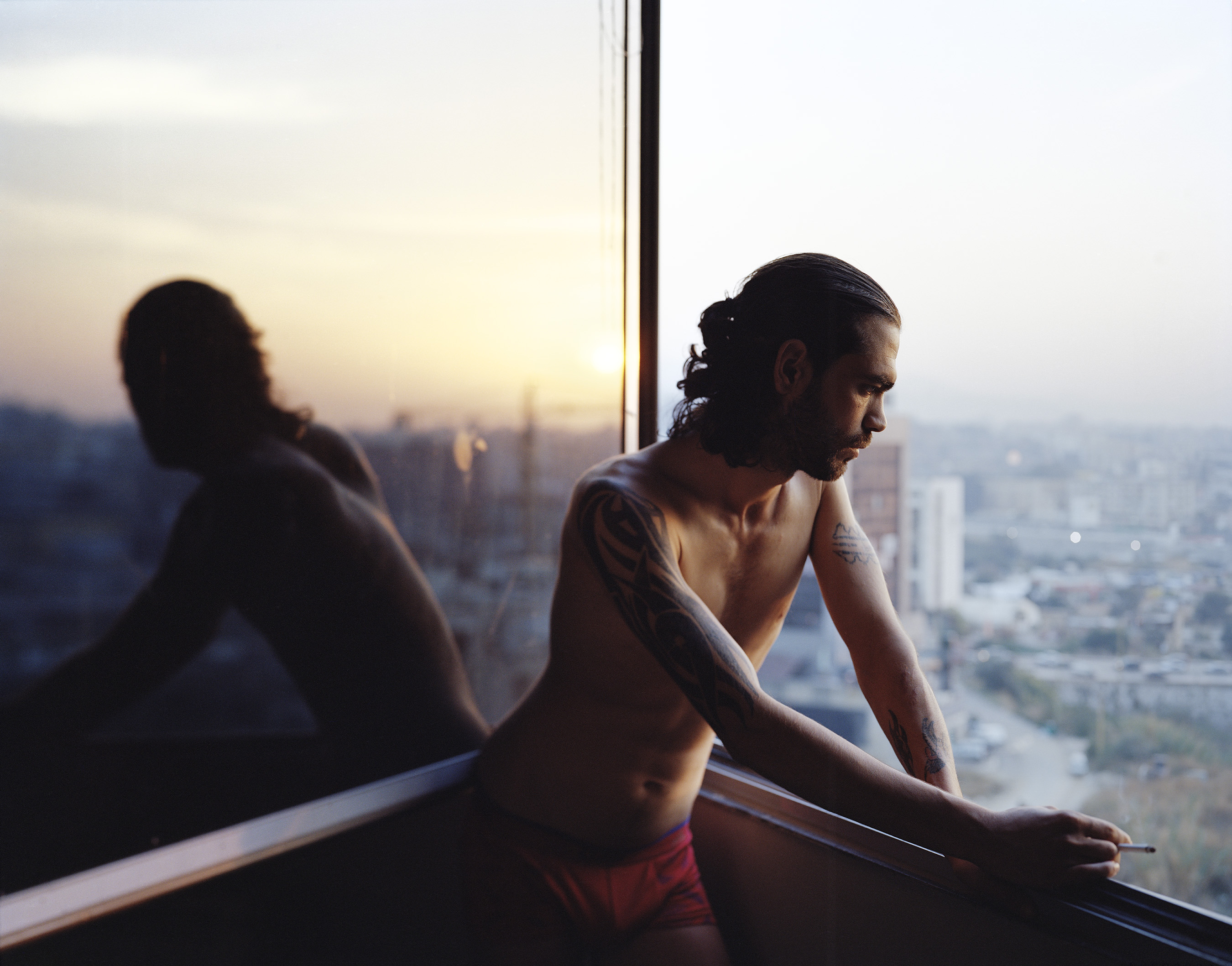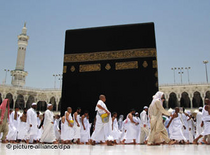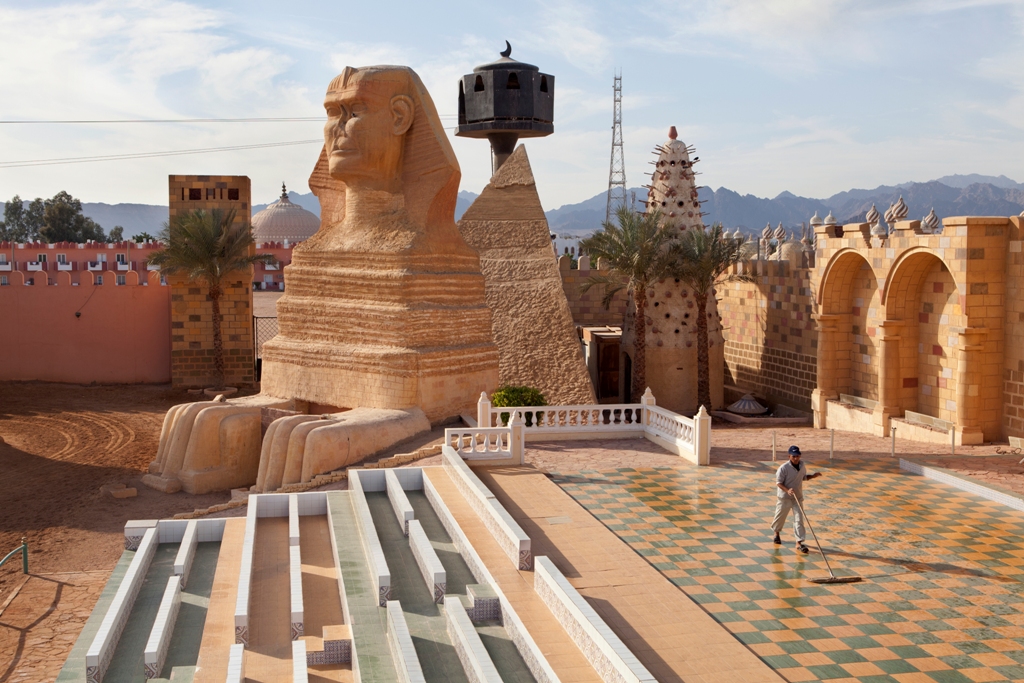A feast for the eyes

Photography originally made its way to the Arab world in the luggage trains of European colonisers. Although much that was produced remained under the radar of Europe′s cultural institutions for a long time, the region began developing its own photographic traditions from the early 20th century on. Now, in the current era of global digital networks, the landscape has been utterly transformed.
The digitalisation of images has made starting out in the medium far easier and young photographers from the region can address an international audience directly via social media. A biennale showcasing photography from the contemporary Arab world is revealing just how fascinating the work of different generations of photographers from the region can be.
Two prestigious Paris institutions have come together for the biennale: the Institut du Monde Arabe (IMA) and the Maison Europeenne de la Photographie (MEP). It also incorporates various smaller galleries, all close to the two institutions in the 4th arrondissement, between the Seine and the Place des Vosges.
The MEP is one of the most important exhibition spaces for photography in France, while the IMA is a unique port of call dedicated to cultural exchange between Europe and the Arab countries. A total of fifty photographers are on show at the biennale.
A forum for young photographers
The central exhibition space with the largest biennale presentation, in the form of 18 photographic works, is the IMA. The exhibition there is structured into four chapters: Spring (which refers back to the Arab Spring), Culture and Identity, Interior Spaces and Landscape. The photos are accompanied by short statements in which the photographers give an introduction to their work and provide interesting background information. The pieces address a large variety of themes: the role of the younger generation, the subject of displacement and migration, religious identities, sexual violence against women and urbanisation issues. The high photographic quality and the excellent presentation of the pictures make for an impressive show.

Above all, a young generation of photographers born in the 1980s are given a chance to display their skill at the IMA. The French photographer Mouna Saboni, for instance, finds convincing interpretations on the subject of sexualised violence against women in her mix of photographic portraits and quotes from conversations. The Moroccan Hicham Gardaf and George Awde from Doha, on the other hand, look at young people′s lives in the Arab Mediterranean countries via impressive and observant pictures of everyday activities. Awde for example uses a large-format camera to portray young Syrians in Lebanon in sensitive, unpretentious photos.
Individual photographic positions
Whereas the IMA exhibition is designed as a group show, the MEP focuses more closely on individual photographic positions, giving each photographer more space. It includes a retrospective of the work of Moroccan photographer Daoud Aoulad-Syad, a child of the 1950s, whose black-and-white photos turn a sharp eye on rural Morocco of the 1980s and early 1990s. His work shows country people, travelling showmen and the goings-on at the margins of weddings. One can tell that the photographer is also a film buff, because his pictures are taken from a very observant, withdrawn perspective. The deliberate lack of detailed captions allows viewers to imagine their own context for the pictures' content.
In their work ″Sinai Park″, the Palestine-based photographer team Andrea&Magda focus on the economic crisis on the Egyptian Sinai Peninsula resulting from the Arab Spring on Tahrir Square. They show construction ruins on the Dead Sea, abandoned hotel complexes and failed infrastructure projects. The absurdity of this world is perfectly illustrated in a picture of an amusement park. In the middle of the photo is a stage, on which five men in traditional dress are playing music alongside a person in a Mickey Mouse costume. Whoever the performance is aimed at, not a single visitor is visible in front of the stage. How better to visualise the title ″Sinai Park″ and the economic crisis in photographic form?

France and the Arab world
The exhibition uses a broad definition of the term ″Arab world″. Firstly, work is presented by photographers with no personal biographical link to the region. Secondly, the content is equally broad: the work of Faycal Baghriche, for instance, shows mosques in Montreal and thus casts a glance at Muslim practices outside the Arab world. The pity about the IMA exhibition is that it only features single pictures by a number of photographers, even though they come from larger complexes of work. This takes the individual photos out of context, turning them into mere placeholders for the photographers′ work.
Yet again, however, the exhibition highlights France′s unique relationship with the Arab world. Cultural relations, particularly those with the former French colonies in northern Africa, are significantly closer than those of their European neighbours. This is evidenced by the many photographers and artists with Arab roots living in France and also by the much greater attention granted within France to photographic work from the region. As the biennale impressively proves, it is always worth looking to France′s art scene for positions from the Arab world.
Felix Koltermann
© Qantara.de 2016
Translated from the German by Katy Derbyshire
All artists and their work are presented on the biennale website.